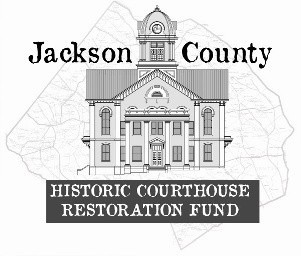JEFFERSON - A year after preservationists expected to complete the exterior renovation of the historic Jackson County Courthouse, contractors now are putting the finishing touches on that stage of the project.
``We think it looks fabulous,'' said Charlotte Mealor, chairwoman of the Jackson County Historic Courthouse Restoration Committee. ``I know there's still the punch list, but as far as the committee is concerned, it's complete.''
Contractors are going over last-minute tasks around the building and should turn it over to the county this month, said Don Clerici, a consulting engineer who took over the project last January.
Workers broke ground on the $1.8 million project in May 2009, with the goal of restoring the building to its 1908 grandeur. Now, with the roof replaced, 1970s-era additions removed and stone walls thoroughly refurbished, the restoration committee is busy raising money to redo the interior.
Once finished, the building will house an archival county records vault, a welcome center, a museum and meeting rooms.
After Jackson County government offices moved to a new building on Georgia Highway 82 in 2005, the county committed $2 million to restore the exterior of the old courthouse to the way it looked in 1908 and turn the interior into usable space for offices and community meetings.
The restoration committee already has secured a $200,000 grant to build the climate-controlled records room, and Jackson County and the city of Jefferson have applied for an additional $1 million grant to help finish the renovation work.
The cost estimates for the interior restoration vary, and how detailed the final restoration is will depend on the amount of money on hand, Mealor said.
The restoration committee's most immediate plans are to install period-appropriate landscaping around the building.
Members hope to replicate the landscape documented in a 1905 photograph, using plants grown from cuttings of shrubs that were on the property before the restoration and also plants that were commonly used in turn-of-century Southern gardens.
While the plans for the landscaping are not in-depth, the committee couldn't start on the project until work on the exterior was complete.
``With the renovation of a structure built in 1900, anytime you get started you're going to get in and realize there are problems you weren't expecting,'' Clerici said. ``You don't know what you have until you get in and pull the carpet up, so to speak.''
Among the surprises that contractors found in the old courthouse were years' worth of pigeon droppings, rotting wood and windows that had to be replaced.
It also was hard to find artisans who could use materials and techniques that were last popular a century ago.
For instance, the restoration committee wanted to use a technique called lime wash to seal the exterior walls instead of using paint. The look is authentic to 1908, but it is not in use today.
``Some of the specialty work is really a craft, and it took a little longer than even the contractor anticipated,'' Clerici said. ``In the end, what we were after was a quality project. This project had a deadline, but not a hard deadline, because we still have the interior to do before anybody could move in.''
While the project ran over its deadline, it did not run over budget, he said.
Contractors knew they had $2 million to finish the job and were able to bring all of the work in for about $1.8 million, leaving $200,000 left over to help pay for the interior renovation.
Friday
July 18th, 2025
8:02PM









